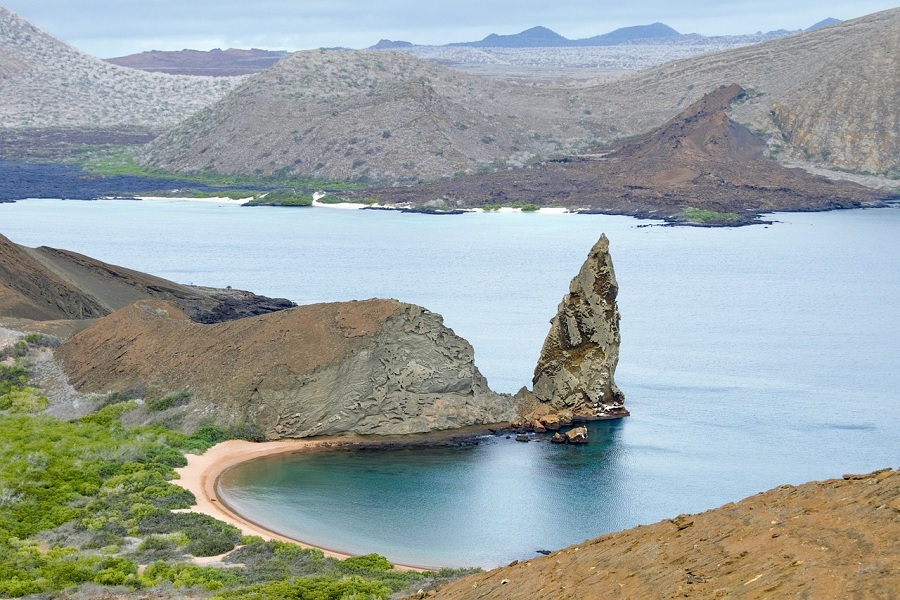Ecotourism in The Galapagos Islands, Ecuador: A Sustainable Paradise

The Galapagos Islands, a UNESCO World Heritage site, are renowned for their unique biodiversity and stunning landscapes. Located off the coast of Ecuador, this archipelago consists of 19 islands and numerous islets, offering a pristine environment that attracts nature lovers, conservationists, and ecotourism enthusiasts from around the globe. The islands are home to extraordinary wildlife, including species found nowhere else on Earth. However, the natural beauty of the Galapagos is also at risk from over-tourism, making it crucial to embrace sustainable and responsible ecotourism practices. Here’s how you can explore the Galapagos responsibly while supporting its conservation efforts.
1. The Rich Biodiversity of the Galapagos
The Galapagos Islands are a living laboratory of evolution. The islands' isolation has allowed unique species to thrive, such as the famous Galapagos tortoises, blue-footed boobies, marine iguanas, and Darwin’s finches. The archipelago’s ecosystems, from volcanic landscapes to lush forests, offer diverse opportunities for exploration. This biodiversity makes the islands a prime destination for ecotourism, where visitors can observe wildlife in its natural habitat, often without the barriers typically found in other destinations.
2. Sustainable Travel Practices in the Galapagos
The Galapagos Islands are a prime example of how ecotourism can be implemented effectively. To protect its fragile environment, the Ecuadorian government has set up several regulations that ensure sustainability in tourism activities:
Permits and Visitor Control: Tourists must obtain permits to visit the Galapagos National Park, and the number of visitors is strictly regulated to avoid overcrowding. This ensures that the islands' natural resources are not overburdened.
Certified Guides: Only certified naturalist guides are allowed to lead tours, ensuring that visitors receive accurate information while minimizing their impact on the environment.
Limited Access to Certain Areas: To preserve sensitive ecosystems, certain parts of the islands are off-limits to tourists or require special permits for access.
3. Eco-Friendly Accommodations
Staying in eco-lodges and hotels that adhere to sustainable practices is essential when visiting the Galapagos. Many accommodations on the islands focus on reducing their environmental footprint by using renewable energy sources, implementing water-saving measures, and promoting waste reduction. Look for establishments that are certified by Ecuador’s Ministry of Tourism for their commitment to sustainability and responsible tourism practices.
4. Wildlife Conservation and Responsible Wildlife Watching
One of the main attractions of the Galapagos is its wildlife, and ecotourism plays a pivotal role in supporting conservation efforts. By visiting the islands, tourists contribute directly to funding the conservation of endangered species and habitats. Activities like bird watching, snorkeling, and diving are popular, but they are also regulated to ensure that tourists do not disturb the wildlife or their habitats.
No Touching or Feeding Wildlife: Visitors are urged to observe wildlife from a distance and avoid feeding animals, as this can disrupt their natural behavior.
Eco-Friendly Tours: Many tour operators offer eco-friendly wildlife watching experiences that focus on education and environmental stewardship. These tours help raise awareness about conservation issues while ensuring that wildlife encounters are respectful and non-intrusive.
5. Sustainable Activities in the Galapagos
The Galapagos Islands offer a variety of activities for nature lovers and adventure seekers, all of which can be enjoyed sustainably:
Snorkeling and Diving: The waters surrounding the islands are home to an impressive array of marine life, including sea lions, hammerhead sharks, and colorful fish. Many diving and snorkeling operators in the Galapagos follow eco-friendly practices to minimize their impact on coral reefs and marine ecosystems.
Hiking: Explore volcanic landscapes, lava tubes, and coastal trails while hiking through the Galapagos. These eco-friendly excursions allow visitors to connect with nature while minimizing their ecological footprint.
Kayaking and Paddleboarding: These non-motorized activities offer a peaceful way to explore the coastlines of the islands without disturbing the environment.
6. Supporting Local Communities
Ecotourism in the Galapagos also benefits local communities by generating income and creating job opportunities. Many residents are employed as guides, boat operators, hotel staff, and in other tourism-related roles. By supporting locally owned businesses, ecotourists help ensure that the economic benefits of tourism remain within the community. Moreover, some tour companies and lodges invest a portion of their profits into local conservation projects, contributing to the long-term sustainability of the islands.
7. Challenges to Ecotourism in the Galapagos
While ecotourism offers a means of supporting conservation, it also comes with its challenges:
Overtourism: With its growing popularity, the Galapagos faces the threat of overtourism, which can harm delicate ecosystems. The challenge lies in balancing the influx of tourists with the need to preserve the environment.
Invasive Species: The introduction of non-native species by tourists or vessels is a significant threat to the biodiversity of the islands. Strict quarantine measures are in place to prevent the spread of invasive species, but continued vigilance is needed.
8. How You Can Contribute to Ecotourism in the Galapagos
As a visitor, you can help preserve the beauty and biodiversity of the Galapagos Islands by adopting the following practices:
Follow the Rules: Adhere to the regulations and guidelines set by the Galapagos National Park and your tour guides. These rules are in place to protect the islands' fragile ecosystems.
Respect Wildlife: Observe animals from a distance and avoid interacting with them. Do not disturb their natural behaviors or habitats.
Support Sustainable Operators: Choose tour operators, accommodations, and businesses that are committed to sustainable practices and support local conservation efforts.
Educate Yourself: Learn about the conservation challenges facing the Galapagos and share this knowledge with others to promote environmental awareness.
Conclusion: A Model for Sustainable Tourism
The Galapagos Islands serve as a model for ecotourism, showcasing how travel can be used as a tool for environmental conservation. By prioritizing sustainability and responsible tourism, visitors can enjoy the unparalleled beauty of the islands while ensuring their protection for future generations. As more people embrace ecotourism in the Galapagos, the islands' delicate ecosystems can continue to thrive, offering a lasting example of how nature and tourism can coexist in harmony.




















